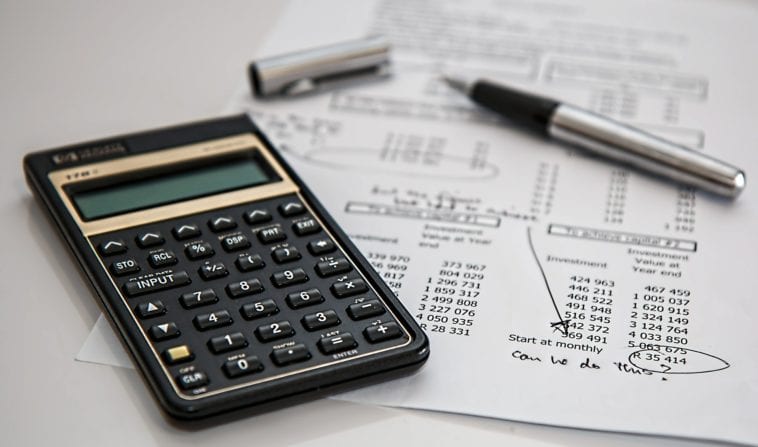Personal finance is an important thing to understand, but too many people learn about it as they go along and through trial and error. It can be tricky to try to decipher some of the words and phrases commonly used when talking about finances, but by taking the time to learn more about financial terms, you’ll learn how to make better and more informed choices for your financial future.
501(c)(3): This is part of the U.S. Internal Revenue Code that designates a federal tax exemption for nonprofit organizations.
529 College Savings Plan: A 529 account is the most common college savings plan that parents can use to pay for their children’s education while also receiving tax benefits. These plans are authorized by the Internal Revenue Code and sponsored by states, state agencies, or educational institutions.
Adjustable Rate: An interest rate that adjusts itself periodically, usually at regular intervals. Often, this means that the rate will fluctuate based on economic indicators. Adjustable-rate loans are considered riskier than fixed-rate loans.
Annual Interest Rate: Also known as the Annual Percentage Rate (APR), the annual interest rate is the rate applied to a person’s debt over a 12-month period. You can determine your monthly interest rate by dividing your APR by 12.
Appreciation: An increase in value over time. Some items, like rare collectibles and fine art, increase in worth over the years and can be sold for more than they were originally bought for.
Assets: Items with significant monetary value that can be sold for cash or used to settle a debt. Assets are often property, vehicles, collectibles, fine art, or jewelry.
Bonds: A basic type of asset that can be issued by governments, companies, and states at a fixed interest rate for a certain period of time. The issuer of a bond owes the bond holders a debt and must pay interest on it when a set period of time ends and the bond has matured.
Budget: An overview of income and expenses over a period of time. A budget projects how much money a person or a business anticipates making and how much is to be spent.
Checking Account: A checking account is a bank account that can be used to make payments by check and deposit and withdraw money using a debit card, ATM, or check.
Cost of Living: The amount of money it takes to survive and run your household. The cost of living usually includes the cost of rent, utilities, groceries, transportation, and other miscellaneous bills that are imperative to get by.
Credit: Credit is an amount that a consumer is allowed to use to purchase goods and services in exchange for agreeing to pay it back over a set period of time.
Credit Card: A credit card is a financial tool for consumers through which banks can extend a certain amount of credit based on your credit score if you promise that you will pay back that money over time.
Debit Card: A financial tool tied to a consumer’s bank account, a debit card allows you to withdraw money or make purchases using the money already in the account.
Debt: Money that is borrowed that must be repaid over time is debt.
Deduction: A deduction is an amount of money taken out of a paycheck for a specified purpose, such as health insurance, taxes, or retirement.
Depreciation: The decrease in value of an asset over time. When an asset depreciates, it means that it is not worth as much as it was when it was bought. Cars are a prime example of a depreciating asset.
Expense: An expense is a cost that you must pay. It’s important to make sure that your expenses aren’t greater than your budget.
Income: The amount of money you earn and have available to spend in your budget every month is your income. Income includes paychecks, benefits, government assistance, dividends, and court-ordered payments.
Inflation: The increase in the price of goods or services over time is inflation.
Installments: A sum of money may be divided into installments, smaller payments to be paid out over a set period of time.
Interest Rate: A percentage of the amount owed that is added to a debt over time. For each payment cycle that passes, the lender multiples the remaining balance owed by the interest rate, and this is added to your balance owed.
Investment: Any asset that is purchased with the intent of earning a profit is an investment.
Loan: A loan is an amount of money borrowed from an individual or company that must be repaid over time.
Overdraft: Spending money you don’t actually have to make a purchase your account can’t cover is called an overdraft. This usually results in bounced checks, fees, penalties, and/or canceled services.
Risk: The potential for an investment to fail to make a profit is its risk.
Savings: Money put away in the bank for a future purpose. Savings accounts typically have a low interest rate; the longer money is in a savings account, the more money will slowly accumulate without much effort.
Tax Refund: The amount of money the government gives back after you file your tax return if you overpaid on your taxes throughout the year is your tax refund.
Tax Return: Official paperwork that has to be filed with the government every year that declares how much income you’ve earned in the past year and how much you paid in taxes. Doing your tax return will show whether you owe the government more money or they owe you. Tax returns must be filed by April 15th every year unless you file for an extension.
More Personal Finance Resources
- What Is Financial Literacy?
- Financial Literacy for High School Students
- Practical Money Skills: Budgeting Basics
- Business and Finance News
- Personal Finance: Saving and Budgeting
- Personal Finance: Learning to Earn
- Financial Learning Activity: What’s Worth Saving For?
- Personal Finance
- Money Fit: Budgeting Game of Scenarios
- Intro to Personal Finance
- Personal Finance and Business
- Personal Finance Habits for Students
- Personal Finance
- The Mint: Scarcity, Choices, and Decisions
- Making Personal Finance Decisions

